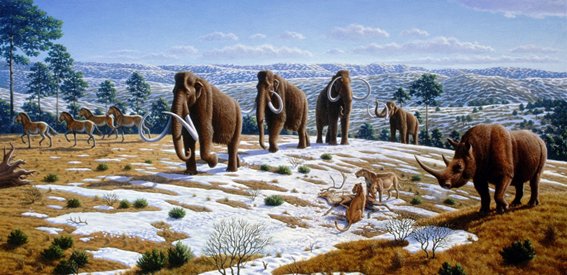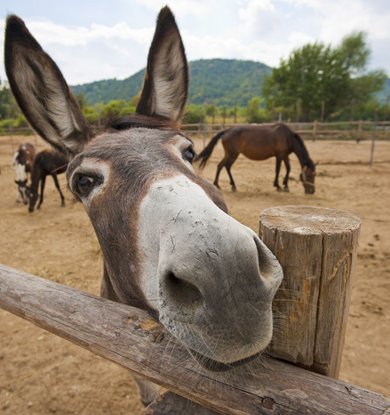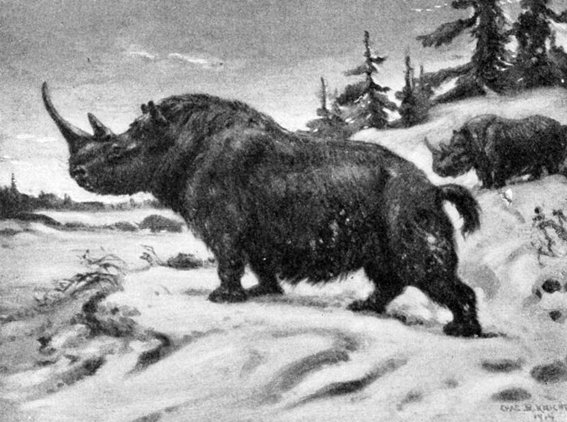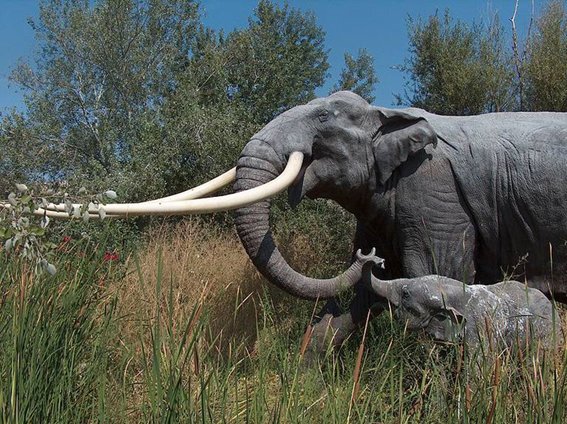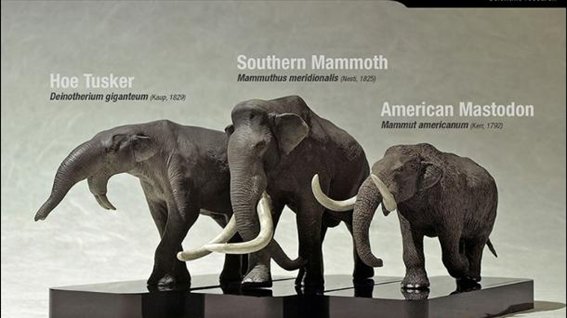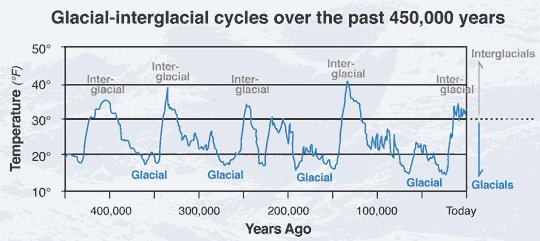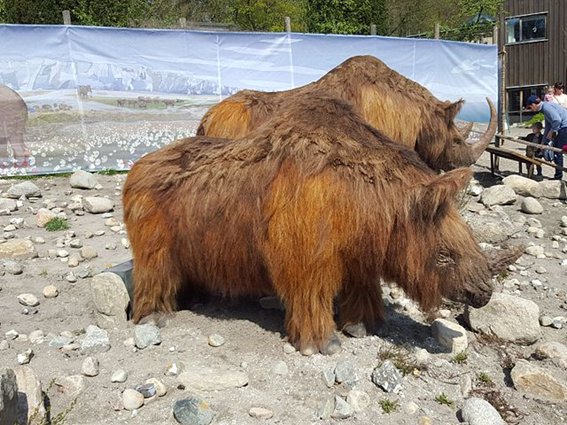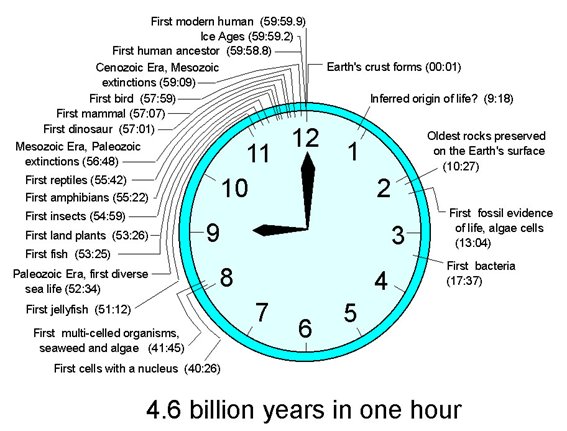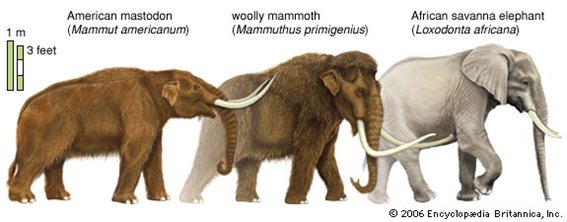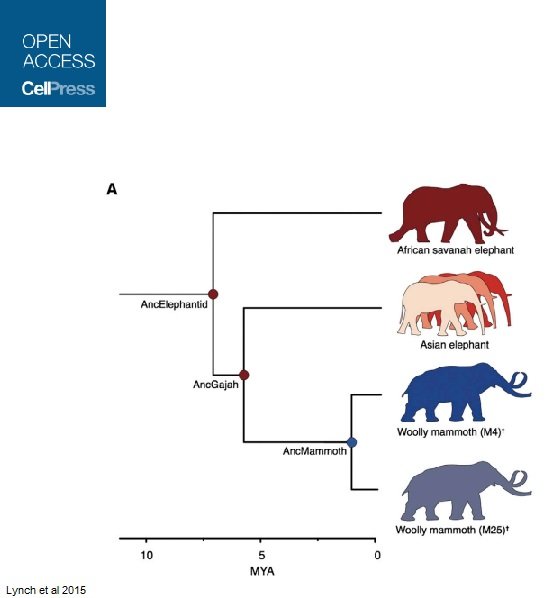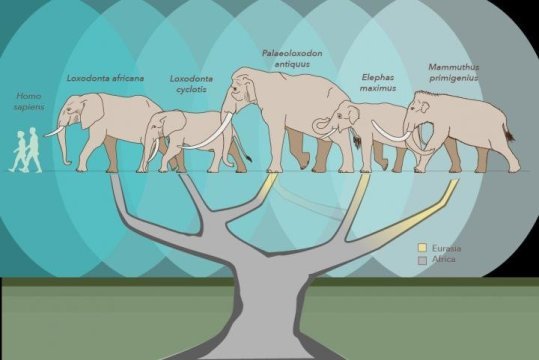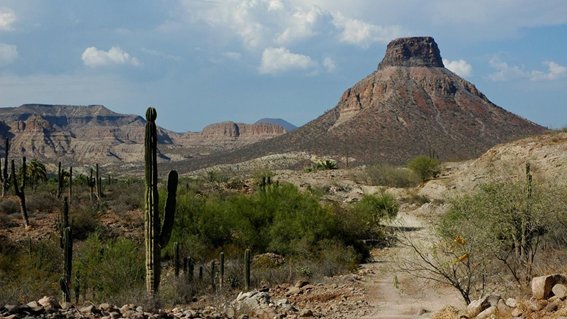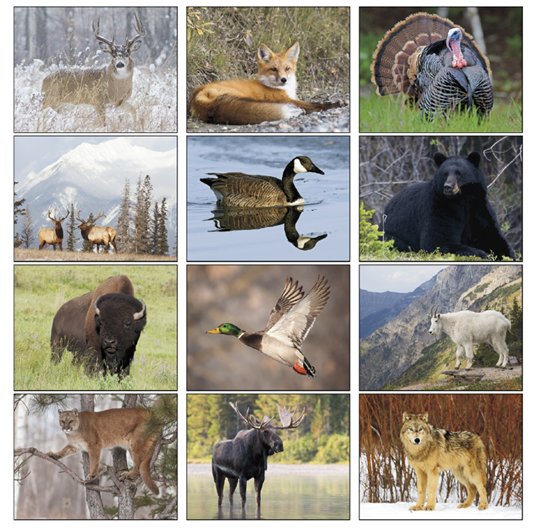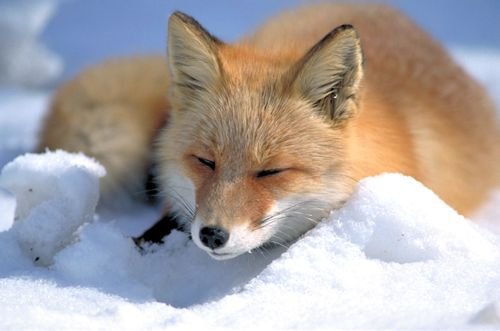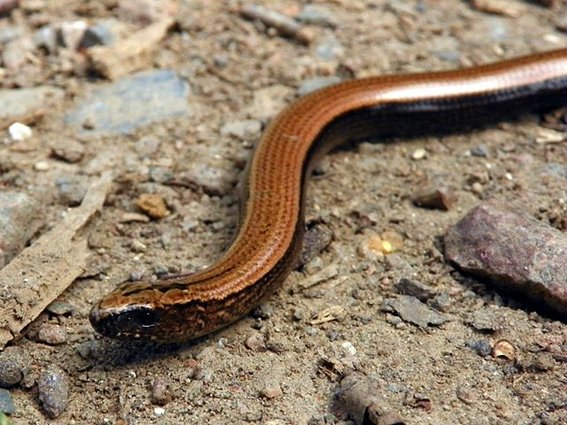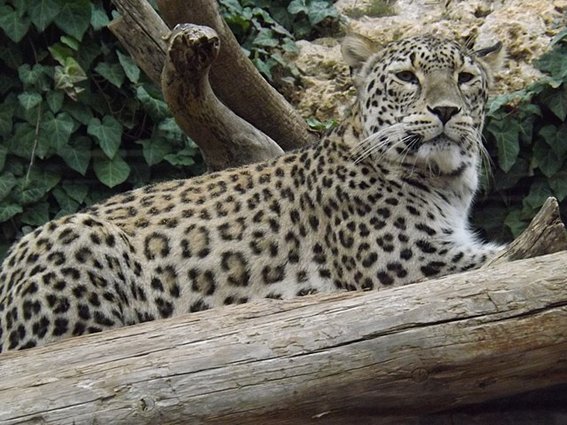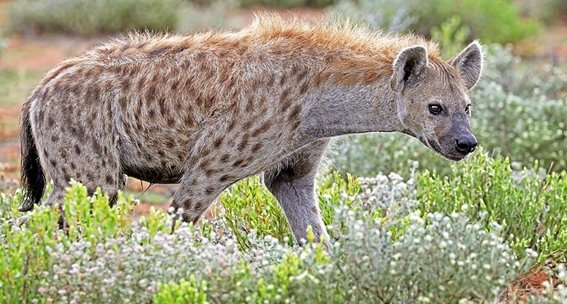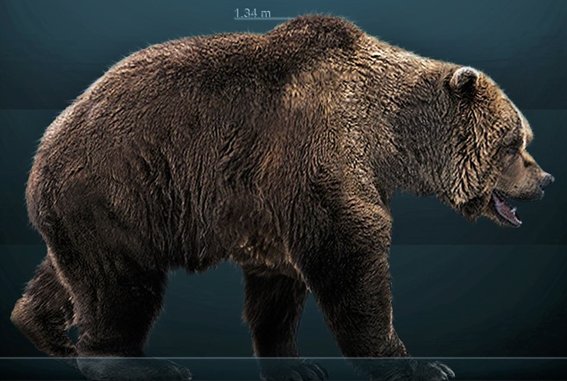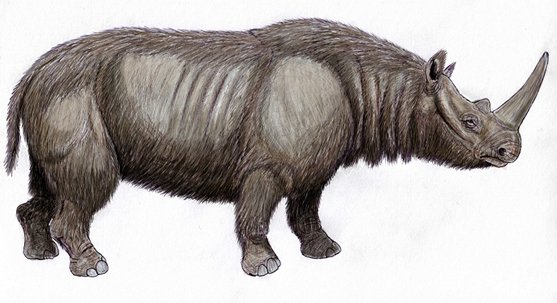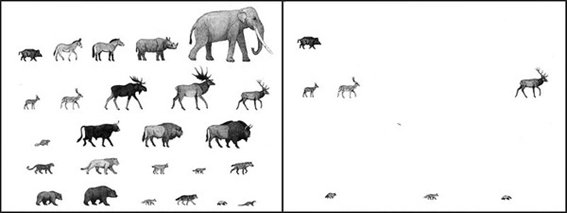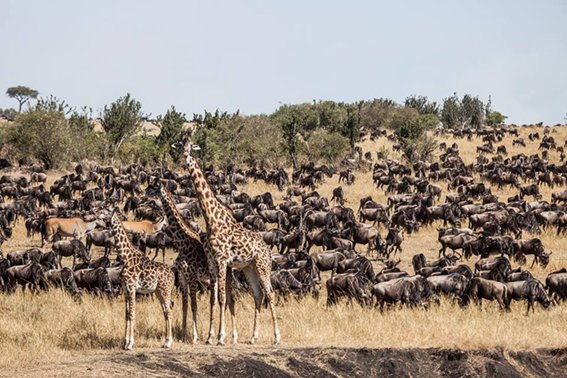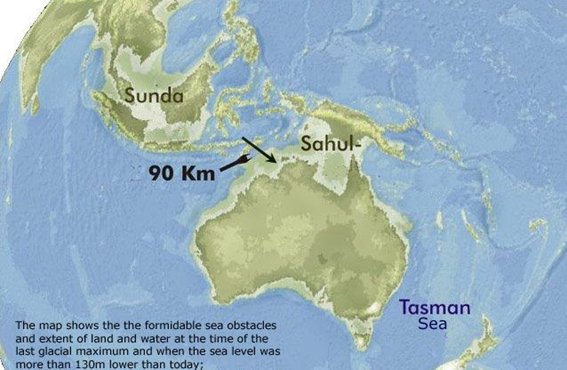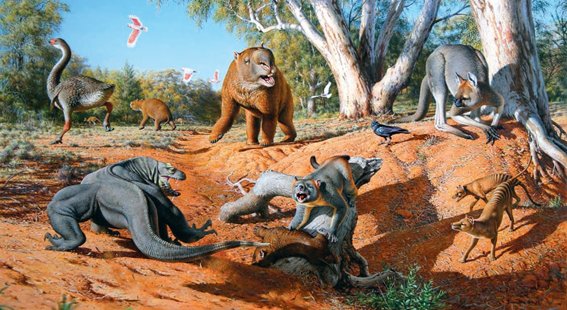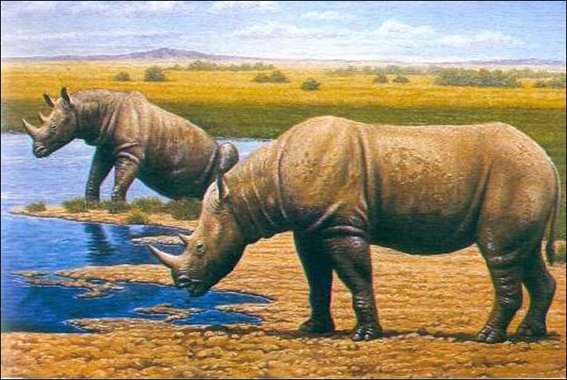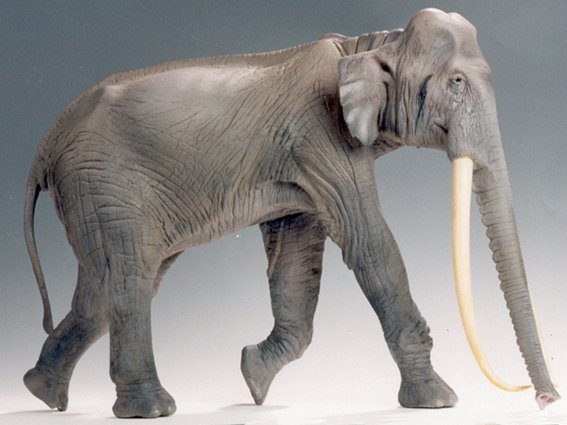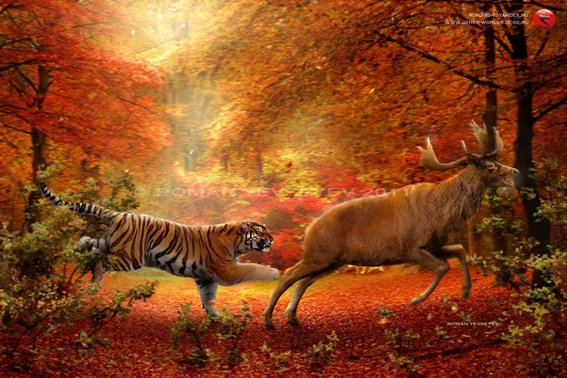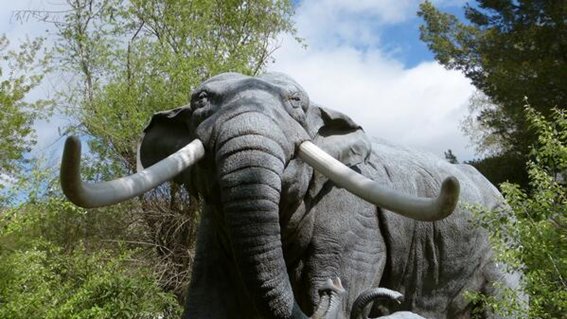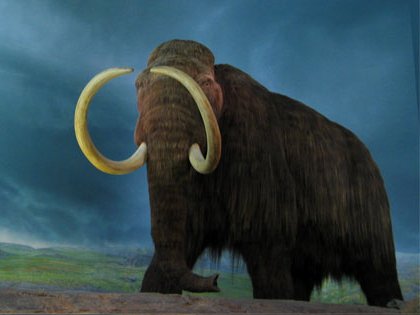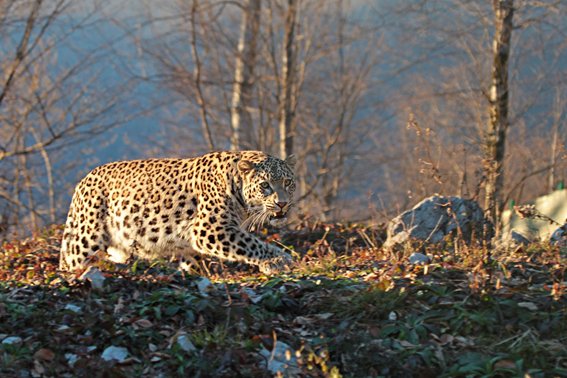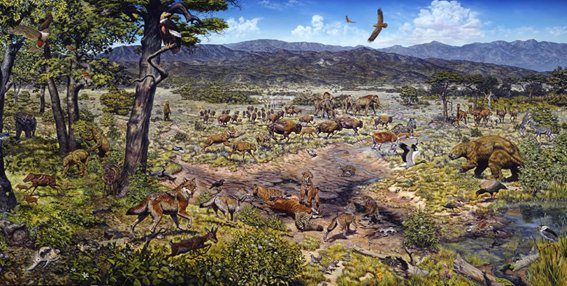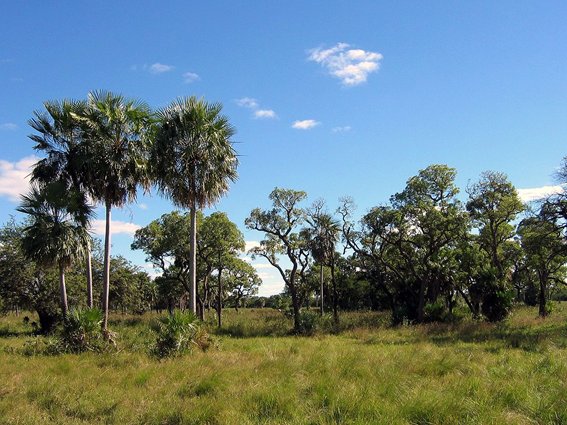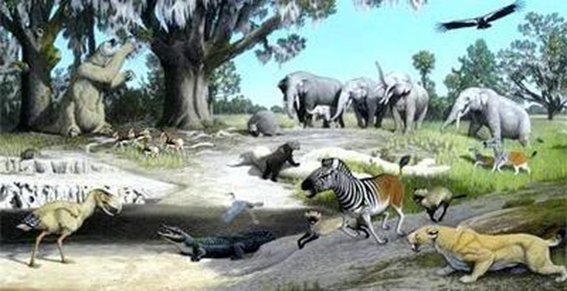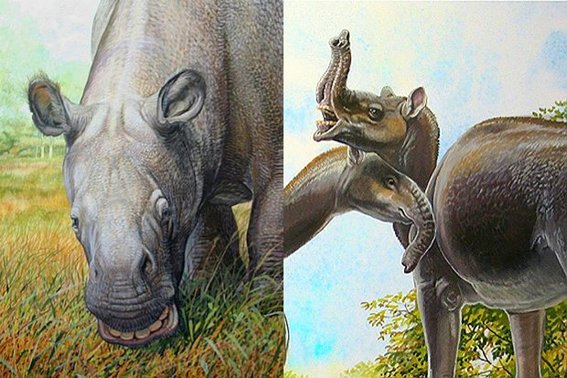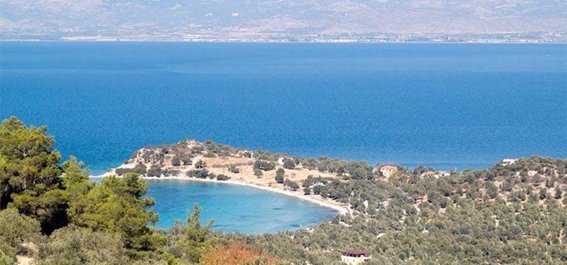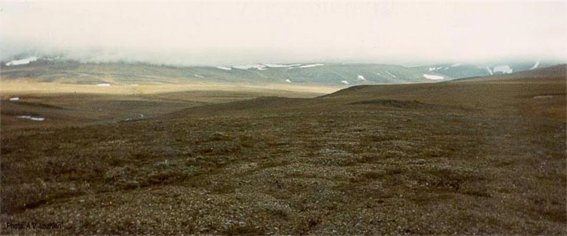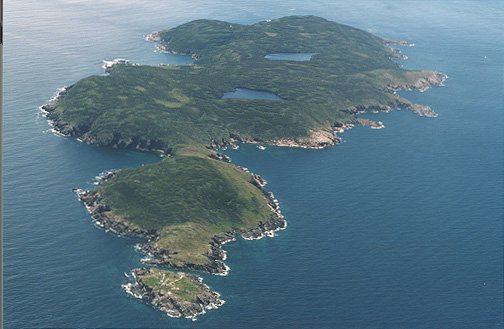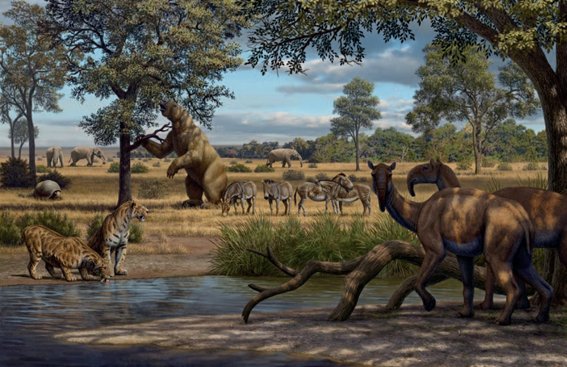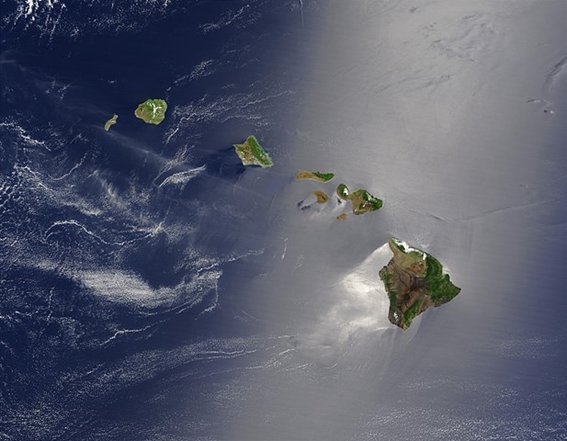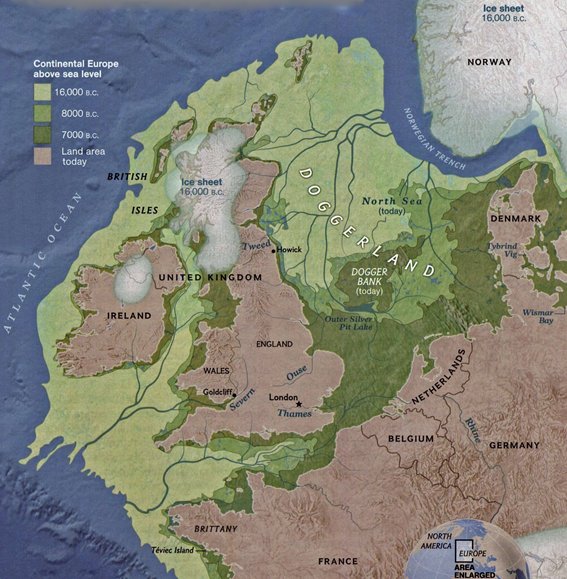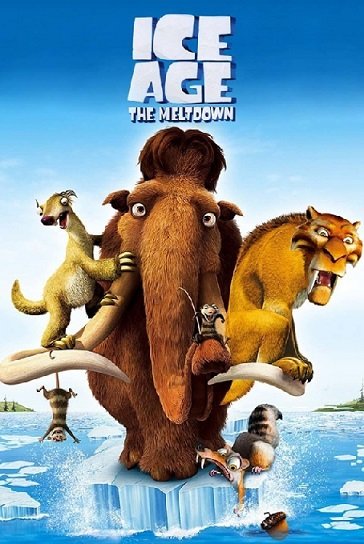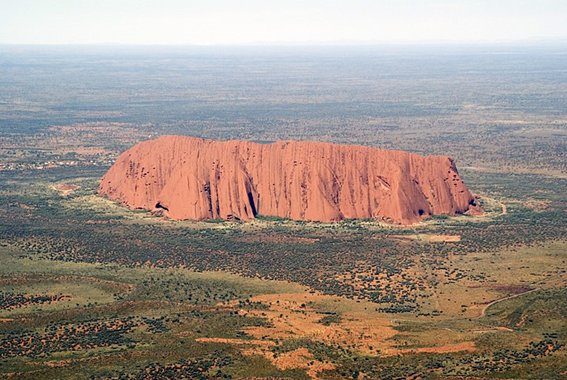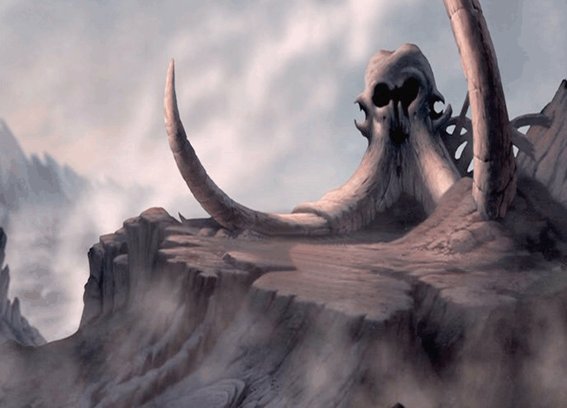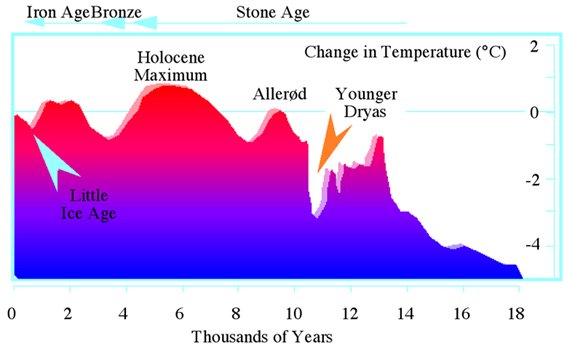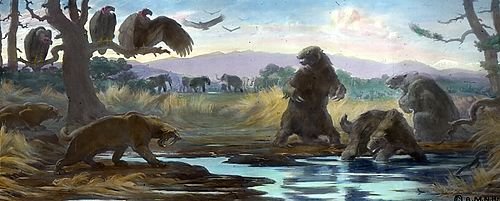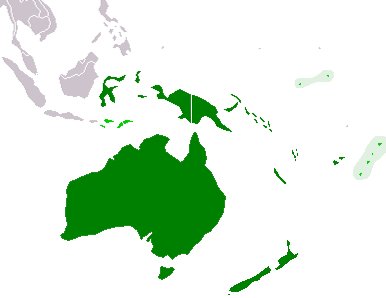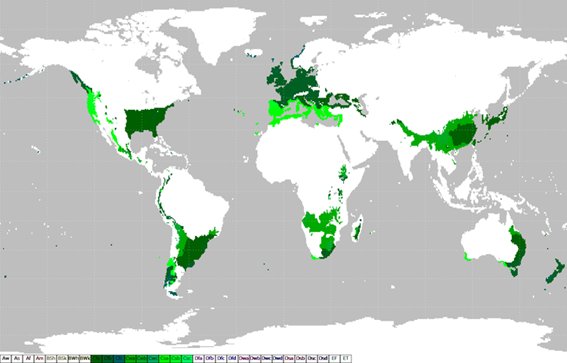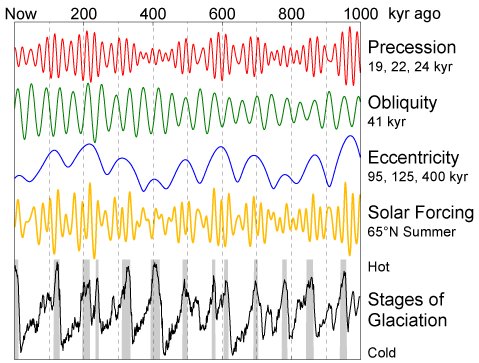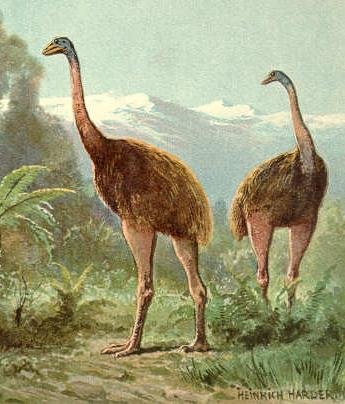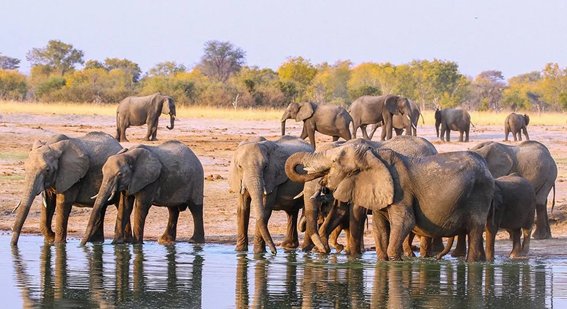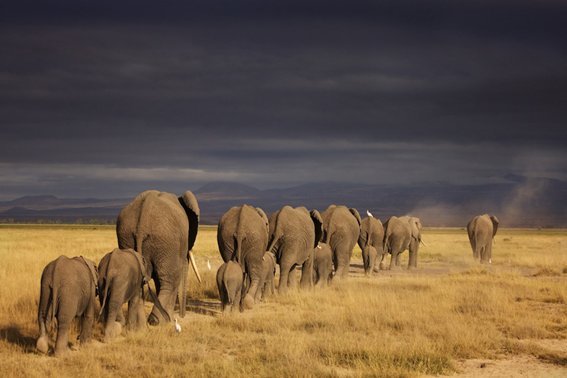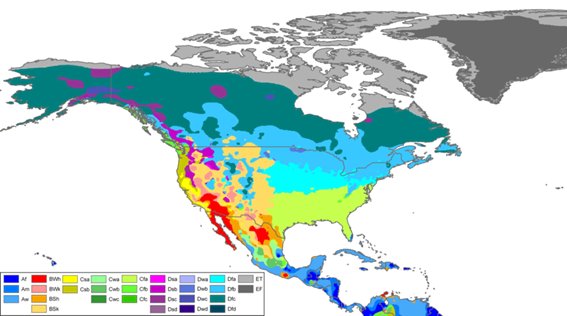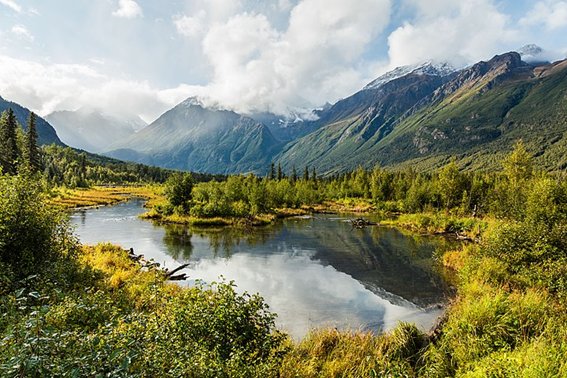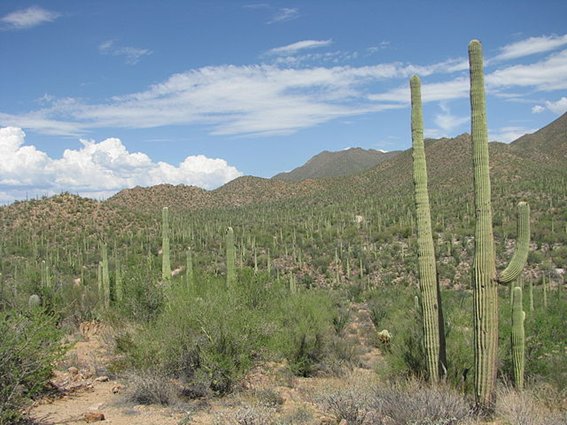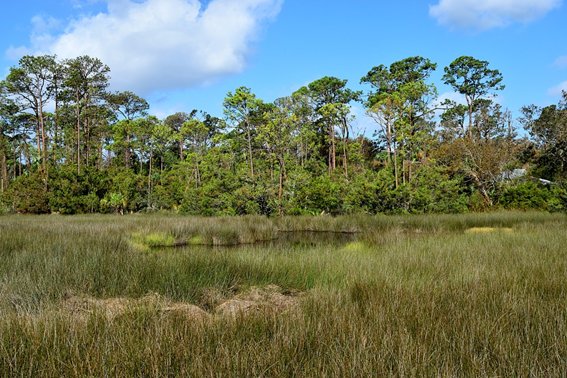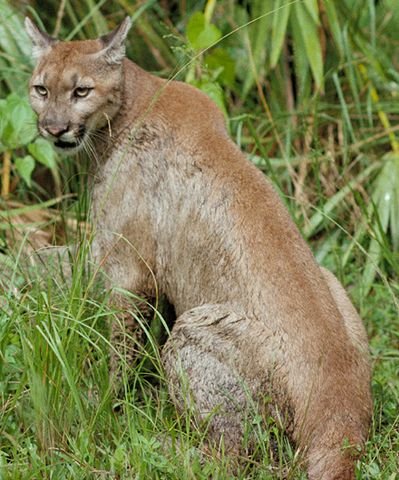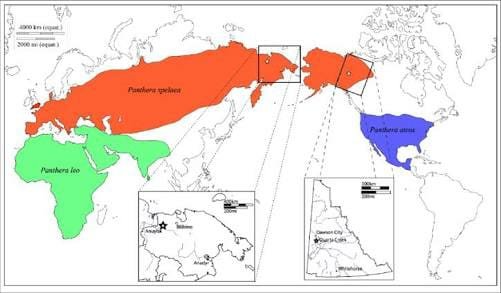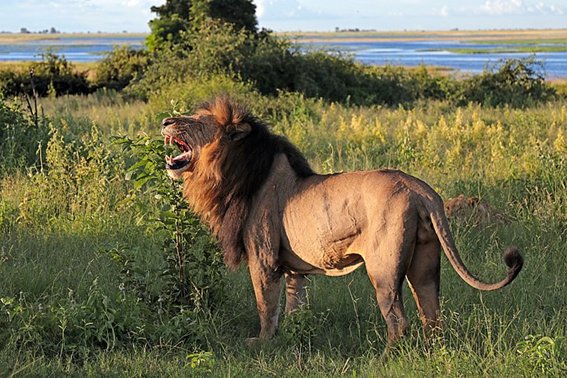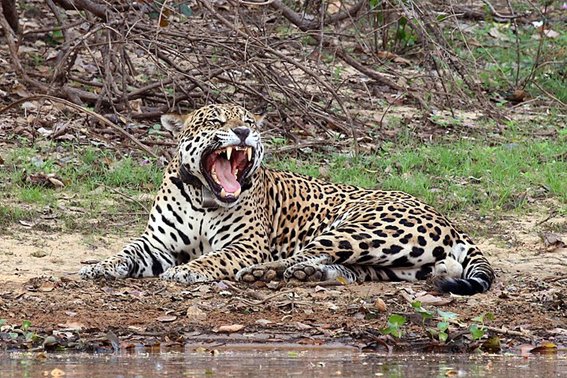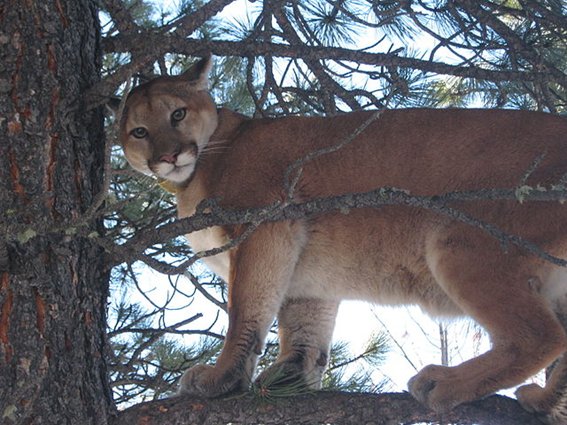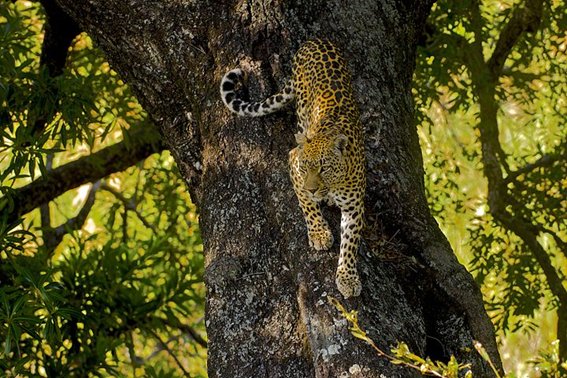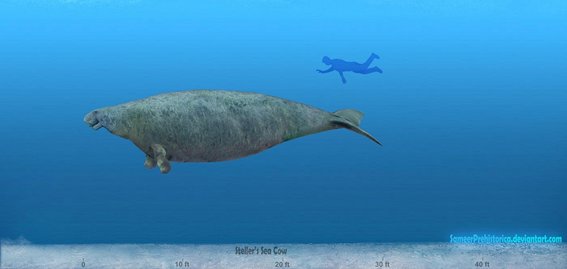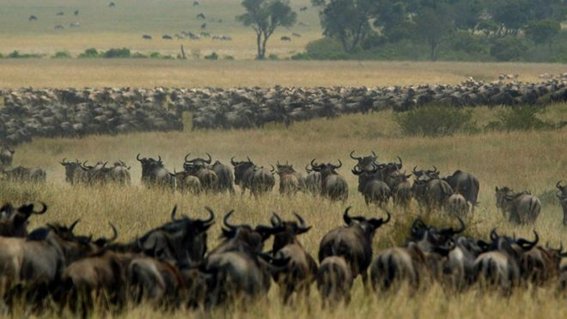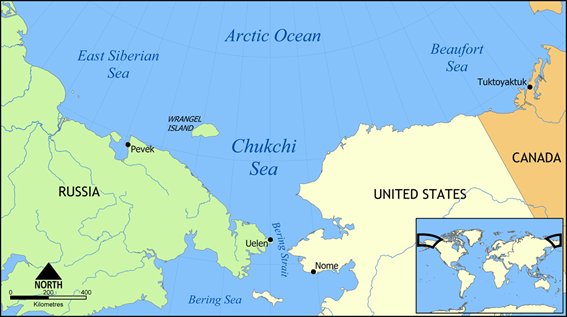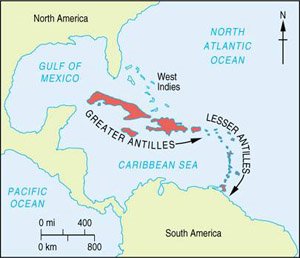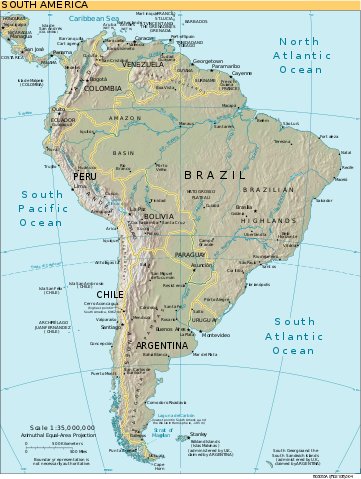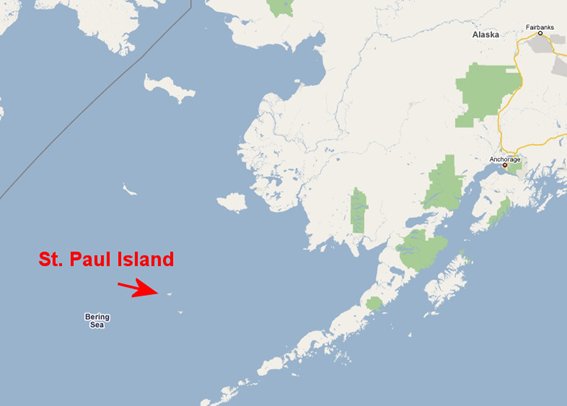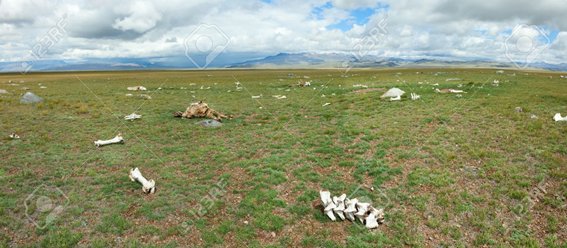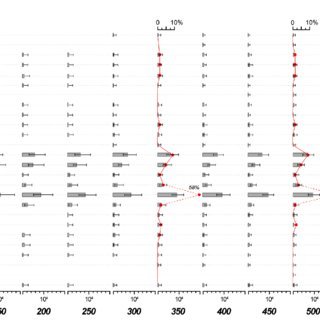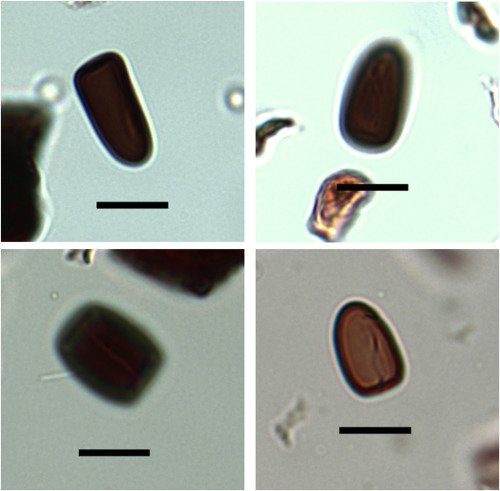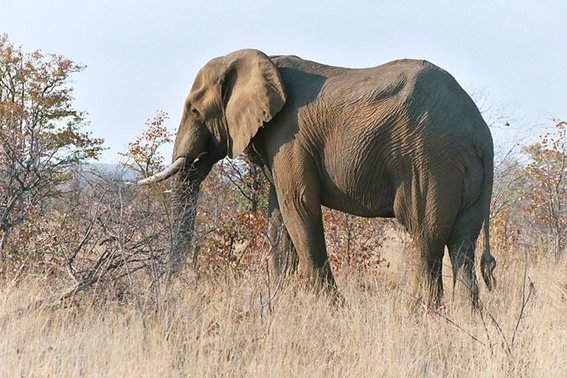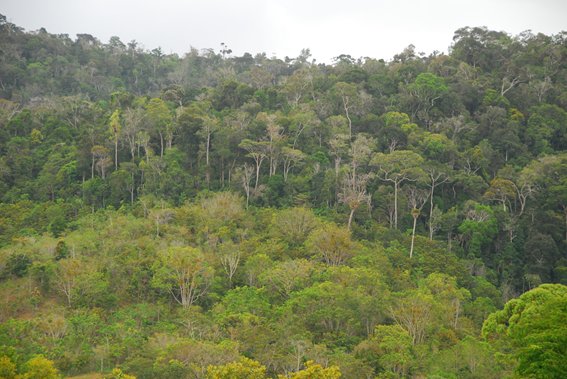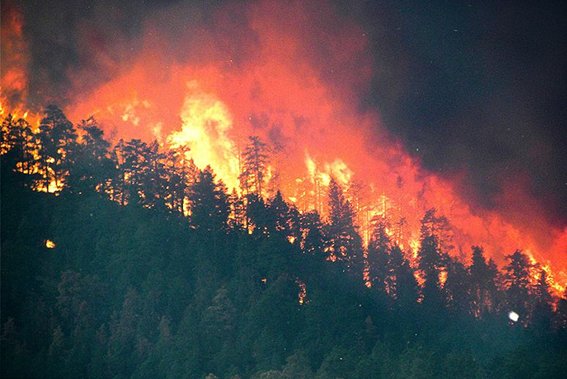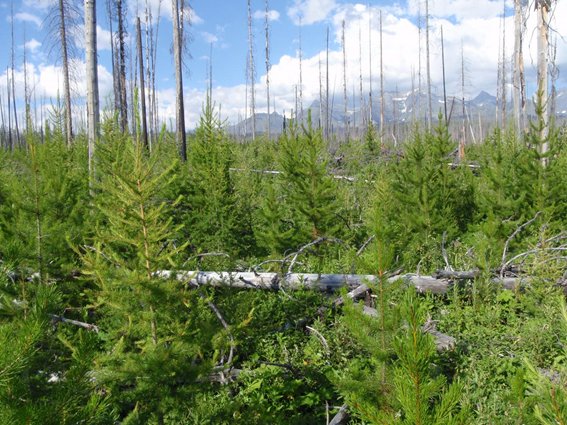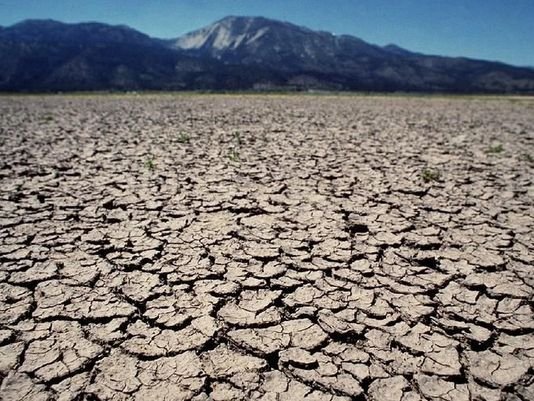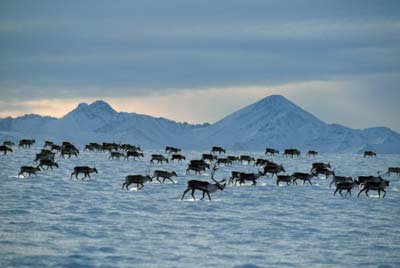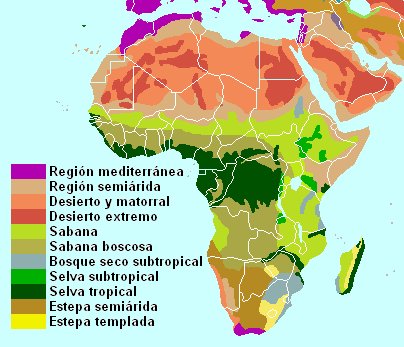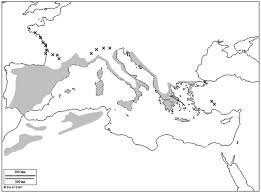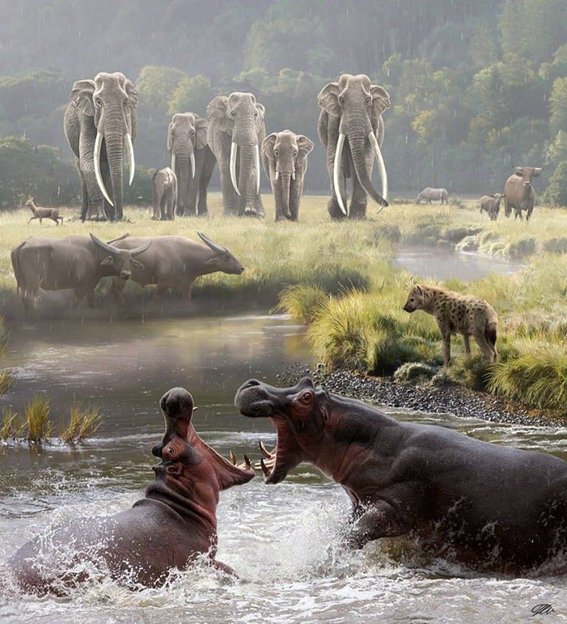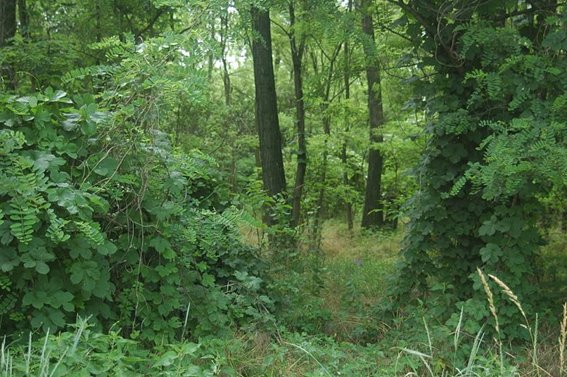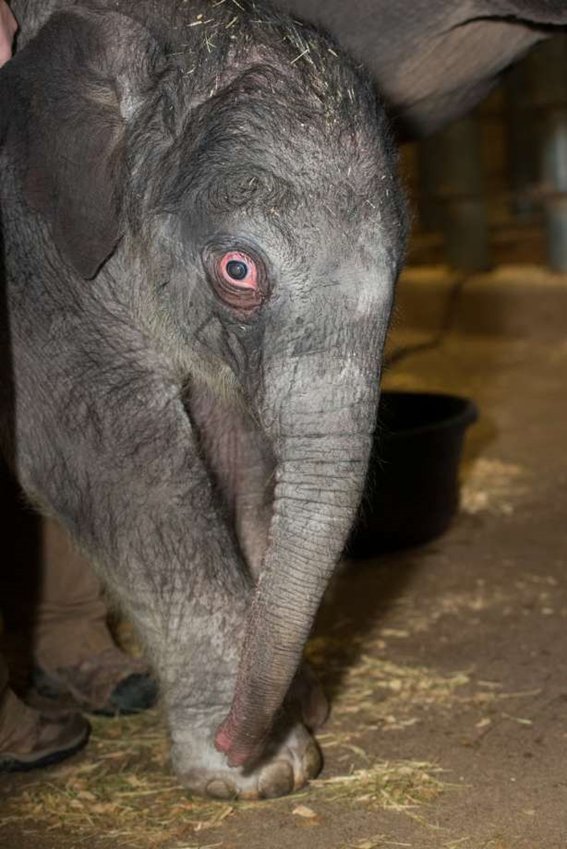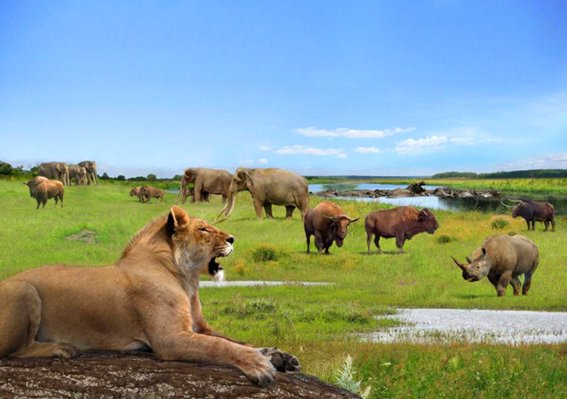A thread discussing the causes of the Late Quaternary megafauna extinctions, AKA Ice Age animals. It will be the first of a series that will also deal with the consequences of, and the solutions to these extinctions, because the effects of this cataclysm still persist. #Megafauna
The first thing that needs to be pointed out is that the phrase "Ice Age animals" confuses rather than clarifies.
These extinctions follow a very strange pattern. Although the effects were global, the processes were regional and asynchronous. They were also very selective. For one thing they affected primarily large animals, or megafauna (heavier than 44 or 100 kilos, depending on authors).
But this extinction event did not differentiate between climates, and did not only extinguish cold-tolerant megafauna like wooly mammoths and woolly rhinos.
In Europe, for example, 4 species of rhinos and 2 of elephants were lost. Three were adapted to cold and dry environments but the other half thrived under the more humid and temperate climates typical of modern times.
In the Americas all species of proboscidean disappeared, including the woolly and Columbian mammoths, the gomphotheres and the mastodon. The climatic adaptability of these species was such that proboscideans of one kind or another were found from Alaska to Argentina.
And another essential piece of information to provide some context: there was not just the one Ice Age that ended abruptly ~ 14,000 years ago, there actually have been DOZENS OF GLACIATIONS that have occurred over the past several million years, all with interglacial periods.
The current interglacial is called Holocene. And the former interglacial period, the Eemian or Sangimonian, was even warmer.
I.e., the woolly rhinos and other species that we associate with extreme cold survived without issue into interglacial periods like the previous one (the Eemian) where temperatures in the Arctic were as much as 11 degrees Celsius warmer. Think about it, 11 degrees more.
Another point to clarify is the immediacy of these extinctions. We have a hard time handling scales that far exceed our lifetime. At a certain point thousands and millions of years begin to sound similar, but for evolutionary and ecological purposes their value is very different.
For example, life appeared some 3,700,000,000 years ago. Homo sapiens however, has only been around for ~300,000 years. Our existence makes up only the last 0.0081% of the time that life has been on earth. From this perspective, we’ve only just appeared.
In the clock, Homo sapiens appeared only a hundredth of a second ago (~300,000 years). Extinctions began to get really destructive (to wipe out entire ecological guilds) only ~ 45,000 years ago. They were so recent that on an evolutionary and ecological scale belong to present.
This doesn’t fit in with the popular but erroneous idea that sabretooths, cave lions, woolly rhinoceroses, giant sloths, and mastodons are all animals from extremely ancient times. These species are often even mistakenly considered as ancestors of their surviving close relatives.
The truth is that these species and their living relatives have lived together for most of their existence. The woolly mammoth is not the ancestor of the Indian elephant, but rather they both begin to diverge from their common ancestor five million years ago.
They coexisted during all that time in Eurasia with other species such as Palaeoloxodon antiquus and P. namadicus, the largest elephants of the Old World. All of these species were coeval species adapted to different environments, but they frequently hybridized with each other.
So the animals and plants that we see today have coexisted and co-evolved for most of their existence with what we have come to consider "Ice Age fauna".
If our current flora & fauna lived for millions of years alongside the extinct megafauna as part of the same food webs, and on an evolutionary scale their separation has only just occurred, our fauna is not the one that appeared after the Ice Age one, is what we have left of it.
A concrete example of the European wildlife of the previous interglacial (120,000 years ago). In a Spanish site they find common toad, slowworm, smooth snake, sea eagle, Alpine chough, rabbit, beaver, water rat, field vole, hedgehog, mole, greater horseshoe bat, red fox, otter…
As we see is the same wildlife that is still present in the current interglacial. We are not talking about their predecessor species. They are exactly the same species that we have today, which were already in Europe for a long time before the woolly mammoths became extinct.
Differences become evident in the record of larger animals. Researchers at the same site find remains of wolf, brown bear, wild boar, roe deer, red deer, chamois… the current Spanish fauna; but there are also of cave bear, spotted hyena, leopard, lion, bison, horse and rhino.
When contrasting the surviving wildlife in Europe (the comparative image corresponds to Great Britain) with the one that occupied it for millions of years, we find that most of its autochthonous terrestrial megafauna is locally or totally extinct.
This same pattern is repeated throughout the planet, with no exceptions, although with far fewer casualties in sub-Saharan Africa and tropical Asia. Why these two regions were more resistant to the megafauna extinctions will be explained in another thread.
We have already said that the extinctions were not simultaneous, although as a whole they form a perfectly delimited and differentiated extinction event in the history of life, with a global scope that profoundly transformed the planet. Let's explore when and where they happened.
The first and most destructive of the extinction events —with a megafaunal extinction rate of 88%— occurred in the Sahul, formed by Australia, New Guinea and Tasmania, which were at that point in time connected due to lower sea levels as a result of ice kept by glaciers.
Sahul had been drifting for millions of years since it broke apart from South America and Antarctica, so its megafaunal assemblage was particularly unique. Since 2012, at least 3 different studies have dated the megafaunal collapse to the same date, ~42,500 years ago.
Giant kangaroos, car-sized wombats, 7-meter long monitors, gigantic birds, marsupial lions, and terrestrial crocodiles capable of galloping were some of the animals encountered by the aborigines when they first arrived on the continent.
At roughly the same time as the Australian megafauna collapsed, Eurasia began to lose some of its more temperate-adapted megafauna, with the first wave of extinctions in the temperate Palearctic taking place between 40,000 and 20,000 years ago.
This first wave of extinctions claimed the straight-tusked elephant and 2 European rhinos that had taken refuge from cold in Mediterranean peninsulas and the Caucasus.
The mammoths, elephants and giant deer of Korea and Japan also became extinct at this time (Japan was connected to Eurasia due also to lower sea levels).
The last refuge of European elephant could have been in Iberia. It wouldn’t be the only one to find its final stronghold here. Neanderthal, leopard, dhole, enzebro, brown bear and Iberian lynx… Iberia would see the extinction or survival in extremis of several European mammals.
The second wave of Euro-Siberian extinctions affected mostly the northern latitudes, where extinctions occurred from 15,000 to 6,000 years ago and claimed the woolly mammoth, the woolly rhinoceros, the cave lion, and the European giant deer.
Southern species also disappear from Europe after hundreds of thousands of years, such as the leopard (which got cornered in the Caucasus) and the spotted hyena that disappeared from all of Eurasia and survived only in Africa. The dhole survived in Iberia until ~5000 years ago.
In North America, the first collapses occurred less than 15,000 years ago, some thousands of years before the Bering land bridge, Beringia, that linked it to Eurasia disappeared.
In North America, the proboscideans (five species), equids, camelids, saber-toothed cats, lions, dire-wolves, giant beavers, American cheetahs, cougars, giant sloths, and giant armadillos became extinct, among many others…
Soon after, the catastrophic extinction of the unique South American megafauna began, which would last for several thousand years with similar results to the extinctions in the north (83% of its megafauna would eventually disappear).
The South American fauna included relatives of elephants (gomphotheres), saber-toothed cats, giant armadillos, and giant sloths of four different families with genera such as Megatherium and Eremotherium that could weigh more than five tons.
In addition, there were the unique South American ungulates, such as Toxodon and Macrauchenia, among many other genera that became extinct within a few millennia after inhabiting the continent for millions of years.
Following the continental extinctions of the megafauna were the island extinctions. First there were the Mediterranean island extinctions, with the Antilles extinctions coming soon after.
In historic times Madagascar, New Zealand, and other islands lost their megafauna. Wrangel island off the coast of Siberia was the last known refuge of the woolly mammoth.
Yes, the mammoth was the last proboscidean to become extinct, when the great pyramids had already been built . Technically it can’t be considered a prehistoric animal although it has become its symbol. Writing already existed 4,000 years ago, when mammoths were still roaming.
Isolated from the rest of the world by the oceanic waters they managed to survive the extinction that claimed their continental counterparts. And that was not even their only refuge: another tiny island in Alaska, Saint Paul, was home to mammoths until ~5,000 years ago.
While these 2 populations, so small and isolated, could have been ended by anything, what killed the millions of proboscideans on the continents, and how? What took the hundreds of species of large animals that populated the planet?
Stay with the extinction sequence, because it is essential to understand what happened: Sahul (Australia + N Guinea Guinea), South Eurasia, North Eurasia, North America, South America, Mediterranean islands, Antilles, Wrangel, Madagascar, New Zealand, and remote oceanic islands.
To the naked eye, this seems a rather random and strange order. There only seems to be one clear pattern apart from the size of the affected species: the last extinctions were on the islands.
The only current islands that suffered extinction at the same time as their continents were those that weren’t yet islands when their megafauna disappeared, such as Japan, British Isles or Tasmania, all of which were still attached to the mainland when their megafauna disappears.
This extinction event is called the Late Quaternary Extinction. It was certainly an ecological cataclysm, and it was extremely recent, so its potential causes have aroused the interest of researchers from multiple disciplines.
It has also been the subject of one of the longest and most bitter debates of the scientific community during the XXth and early XXIth century, comparable to the one carried out by detractors and defenders of natural selection in the nineteenth and early twentieth centuries.
So what ended up happening to these species? Most of us have grown up with the comfortable explanation that saber-toothed cats, giant sloths, cave lions, woolly rhinos and other "Ice Age animals" died out because of changes in the climate when the Ice Age came to an end.
The usual image being hairy animals adapted to a polar cold that were unable to survive in the warm world that was born. We know now that this popular idea is untrue. The warming climate was not a novelty and the extinctions did not exclusively target cold-adapted animals.
According to the climate hypothesis, even today the best known among people thanks to an avalanche of movies, documentaries, and press articles sustained by dozens of papers, the climate changed so drastically at the end of the ice age that almost all of the megafauna died out.
But with the data that has been accumulating since we have begun dating fossils more reliably, this hypothesis begins to show too many inconsistencies.
To begin with, the change of glacial cycle that had been the great traditional culprit only coincides with some population collapses of Eurasia and North America.
And the Younger Dryas, a sudden cooling episode that was considered for decades as an annihilating climate event, we know today that it did not precede some collapses of North American megafauna, but instead occurred afterwards. http://science.sciencemag.org/content/326/5956/1100
And related to this, another very important fact, let’s remember it: the former interglacial was warmer and its climatic events were greater in amplitude than those of the current one. https://www.nature.com/articles/s41467-018-06683-3?fbclid=IwAR2uC79wVDOfsDVqnJQs7tt_8EMQIRAe3VrOWeDaU7OBh6_ATQggi5Os0f8
So how is that devastating climate change supposed to act? In order for the climate change hypothesis to be correct, there would have had to be multiple catastrophic climatic events jumping into different places and at different times.
These events would have to occur randomly across continents and islands, destroying almost exclusively large creatures, sweeping the planet until the vast majority of animals over one ton and half of those weighing more than 44 kilos went extinct.
But the climatic changes related to the glacial cycles were planetary events that affected the entire globe. Why did the extinctions not happen at the same time then, at least in the regions that were in the same part of the planet?
Why would the climate have been able to first cause the extinction of almost 90% of the megafauna in Australia but not even affect the New Zealand megafauna that survived for another 40,000 years?
Why would the Last Glacial Maximum have ended the temperate-climate megafauna of Eurasia from Spain to Japan, but not affect the North American megafauna in those same latitudes and environments until tens of thousands of years later?
And why would every one of these regional extinctions have occurred during this last glacial/interglacial cycle and not in any of the more than 30 previous cycles that megafauna have passed through in the last 3 million years?
And why did some extinctions take place in the ice age, others during the transitionary period, and others well into the interglacial? Why such a strange chronology? Climate hypothesis is not capable of giving a logical explanation to the order and asynchrony of the extinctions.
As we will see, countless authors have insisted on blaming the climate for all extinctions of which there is no written record, from the first great Australian mass extinction to the last great extinction of moas in New Zealand.
Do not leave yet, there is still more: a 2004 study analyzed the fossil deposits of the last 65 million years to see which species died out in greater proportion under major climatic changes. Guess what they found? The smallest animals extinguish in the greatest proportion.
And this has a logical explanation: larger animals lose less body heat, endure hunger and thirst for much longer, are able to travel enormous distances —e.g. in Serengeti migration, they trek over 1,200 miles (2000 Km) every year— and remember routes and water points.
They are definitely much better prepared to run away and find new territories when things get really tough.
Why, suddenly, just 50,000 years ago, would this natural pattern turn 180˚ and the climate begin for the first time to cause the extinction of the larger species instead of the smaller ones?
Also worth nothing is that there was not a great extinction of flora in the late Quaternary. Plants are more affected by climate changes than animals, but what we see in this case are substitutions and redistributions of plant communities, not extinctions, why?
Well, there were plant extinctions, for species that depended on megafauna for their dispersion, but we will talk about them in the consequences of extinctions thread.
Whole taxonomic groups that occupied a huge range of climates and habitats were utterly extinguished regardless of the climate to which each species was adapted. In N. America lived at least 5 proboscideans, which combined inhabited the entire range of climates on the continent.
There were species perfectly capable of thriving in polar climates, extremely hot climates, stable tropical climates or in extreme continental climates with profound variations throughout the year.
The proboscideans had managed to conquer all of the enormous range of habitats and climates that occur on a continent the size and position of North America, yet they all went extinct at the same time. How could the same changes in the climate kill all of these species?
Did the warming and the consequent expansion of some habitats not favor a single one of the species adapted to those habitats, to the detriment of the species adapted to the habitats that retreated? That was in fact what had happened before in each change of glacial cycle.
And then there’re the species adapted to very wide ranges of climates, such as the big cats like the lion, the leopard or the puma , which became extinct in entire continents (as we’ll see in the next threads, pumas completely recolonized North America later).
The lion was by far the most widespread carnivore in the world. From South Africa to Siberia and from Spain to Mexico. The climate change hypothesis explains that the lion was not adapted to hunt in the forests that spread when the climate changed.
But what about the Great Plains or the Russian steppes? And what about the leopard, cougar or jaguar that do not depend on open fields? The changes in the form of expansion of the forests should hardly have harmed them, but they all begin to regress in the same period.
But the greatest inconsistency of this hypothesis is this: the extinctions have been much more recent on the islands than on the continents, even when they were the same species, as was the case with the woolly mammoth or Steller's sea cow.
Faced with this enormous contradiction, the defenders of the climate change hypothesis flee from the global analysis of the event as if from a fire.
And we say that it is a huge contradiction because, when it comes to an enormous climate change, island populations are always the first to disappear. For a very simple reason: they have nowhere else to go.
But their relatives on the continent have migratory routes of thousands of kilometers at their disposal, and if nothing stops them, they use them when a sudden climate change makes their habitats to move hundreds of kilometers in a matter of decades or centuries.
So if those brutal climate changes had been able to eliminate the same species from entire continents, how the heck can it be explained that on the islands off the coasts the extinctions occurred many thousands of years after the last major instances of climate change?
There are numerous cases, such as that of the already mentioned woolly mammoth of Wrangel and Saint Paul, the elephants and hippos on the Mediterranean islands, the megafauna of the Antilles or the Steller's sea cow on the island of Bering.
In all of these examples the extinctions between continents and islands were separated by several thousand years.
And the fundamental question here is not why these island populations finally became extinct, but why they did not become extinct at the same time as the continental populations, if not before. Does climate change not know how to swim?
Such inconsistencies should be sufficient to rule out a scientific hypothesis as inconsistent. In fact this is what has happened with many other hypotheses about the causes of extinction after a few decades of research.
But as we say, the supporters of the climatic hypothesis have focused on studying extinctions regionally, which has allowed them to ignore many of the contradictions that invalidate the hypothesis when analyzing the full event.
We have to study each region separately, they say. So for example a tiny island of 100 km² like Saint Paul must remain outside the scope of study of the supposed annihilating climatic cataclysm that took place on the 2 enormous continents that flanked it... Really?
Thus many conclusions by defenders of the climatic hypothesis have been based on the deep changes of vegetation in the fossil record to justify that the regional extinction has been due to these extensive changes, which would have been caused also exclusively by the climate.
In many studies that promote climate change as the main cause of extinction, transformation in plant assemblages and fire regimes have been presented as triggers for the extinction of megafauna.
This premise has been so abused that absurd conclusions have been reached: the American mastodon would have become extinguished as a result of the contraction of coniferous forests, and woolly mammoths due to the expansion of coniferous forests… at the same time.
In direct conflict with the premise of these articles, there have been studies of spores of the manure fungus Sporomiella in sediments that are showing that the order of events in analyzed cases was exactly the opposite of that assumed by climate change proponents.
Because it turns out that in these cases the collapse of megafauna populations occurred not after the changes in plant community, but before.
But this is actually exactly what should be expected when eliminating entire megaherbivorous guilds, especially if they featured ecosystem engineers as powerful as elephants.
A single elephant roots out or consumes an average of 4000 trees per year. When a population of tens of thousands is extinguished, the advance of forest area is exponential. It is in fact what is being observed in Africa where elephants are becoming ecologically extinct.
This leads first to a sudden and unprecedented increase in forests to the detriment of the grasslands, which is reflected in the pollen record, and then to a recurrence of mega-fires that are also recorded in the sediments.
After these catastrophic and recurrent fires, the vegetation better adapted to the fire finally prevails, which bring new plants communities and more homogenous landscapes than the former ones, where many species cannot thrive anymore.
So the climate had nothing to do with the extinctions? Evidently yes, there were cases in which it seems logical to think that climate influenced the rapidity and extension of the extinctions.
When the necessary cause of extinction was joined by a sudden climate change, capable of causing rapid alterations in habitats, species were subject to a more stresses and the sum of factors could accelerate and make extinctions more destructive.
And climate also always exerts a fundamental effect on the distribution of biomes, which of course affects the species occupying them.
A clear example of this is in the Euro-Siberian region, where the first species to become extinct were the temperate-adapted megaherbivorous, which were the least favored by the cold climate prevailing in the period when the extinctions began.
These were species such as the straight-tusked elephant or Merck’s rhino… at the time of their extinction they had a more restricted range than in the interglacial periods, being adapted to temperate and humid climates, which were by then limited to southern Europe.
This evidently made them more vulnerable to negative factors than species adapted to the dominant climate at that time, because their populations were notably smaller and restricted to a very small region in comparison. (The image is one of Óscar Sanisidro masterpieces).
And it’s likely that this wasn’t the only factor that contributed to the earlier extinction of species from temperate climates in Eurasia. That same hot and humid climate was much more favorable to the necessary cause of their extinction than the cold, dry climate in the north.
In short, a specific climatic event could be one of the factors that accelerated or even decided the extinction of certain species. The low reproductive rate of megafauna was almost certainly a factor as well.
But even though these factors were influential, none of them had more than a contributory input to the event as a whole because by themselves they had never caused a mass extinction of megafauna, not even in periods of much more drastic change than those of the last 50,000 years.
Something else had to happen to explain these extinctions as a whole. A new factor had to appear that: was not present before the extinctions began, was present at the time of their occurrence, and that synchronizes in some way with the extinctions’ strange global chronology.

 Read on Twitter
Read on Twitter